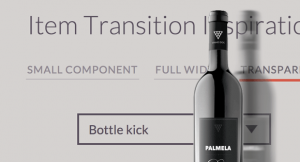Inline Anchor Styles Modern styles and effects for links in a text flow
It had been my luck to live en famille with some herder Lapps once before in North-Western Norway. I had some elk shooting and some fishing up there, and I came across the tribe one day poaching red char from one of my own hired lakes.
Drawing from our own ignorance, and from the united ignorance of others (most freely and generously bestowed), we mapped out the details of the campaign with glibness and ease. At Vardö we were to purchase furs to wear and horses to ride.
It is not to be denied, though, that the Novaya Zemblya scheme had its seductions. There was in Vardö harbour a weird, clumsy craft of the type locally known as “yot,” which had visited that island many times with a crew of hunters.
As regards the commissariat, that we decided would be simple also. Reindeer meat, salmon, rye bread, milk, cheese, and butter would be always procurable from the natives. And besides, we should shoot far more game than we could possibly use for the pot.
The few tins of provisions we did take were mainly to serve as luxuries. For instance, we had quite a large supply of foie gras and larks in aspic.
I had a vivid recollection of how the last tin of that pâté de foie gras went.
With these hints, then, at our initial ignorance of what lay beyond, let me pass on to Vardö, which was the real starting-point of both our plans and our journey. The Windward made an easy voyage of it on the whole up to there, and although she carried away her main-topsail yard...
Inside Vardö harbour walls, then, to a mooring we came, and the smells of the place closed round us and took possession. Bobbling about on the harbour swell around us were some two hundred vessels of strange Northern rig, and almost all connected with the trade in fish.
In the harbour, steamers from France, and Hamburg, and lower Norway, load bales of the dried cod, which will carry the aroma of Vardö as far as Bremen, Brest, and St. Petersburg.
There are other towns of Norway given up to the cult of the cod, but nowhere is it so entirely the one staple of commerce as in this ancient settlement so far within the Arctic Circle. The tail of the Gulf Stream keeps its climate equable.
But the summer is the time when commerce bristles. It is then that the larger merchants toil to make their wealth; and when the lamps begin to kindle in the windows, they take the mail steamers and go away to follow the retiring sun.
Now Vardö was not what we had come so far to see, or smell. We wanted to get started on our travel in Arctic Lapland as quickly as might be; and as soon as the whale-boat had set us ashore amongst the fish litter on one of the wharves, ...
In the first instance the horse-bubble was pricked once and for all. Lapland, it appeared, was largely made up of swamps and lakes and rivers, and we were gravely informed that the horse was not a navigable animal.
The men of the town, and the women, gut the fish, and leave the entrails to rot in the streets, or under the wharfs, or in the harbour water; and then the carcasses are carried to the outskirts and other things of the town, and hung on endless racks of wood to shrivel, ...
In winter, when the snow crust hardened, and the rivers and the lakes wereroofed with massive ice, then movement about the country was a comparatively easy thing. There were recognised routes, and the traveller could pack himself into one of the boat-like, ...
Excerpts from Through Arctic Lapland by Charles John Cutcliffe Wright Hyne

